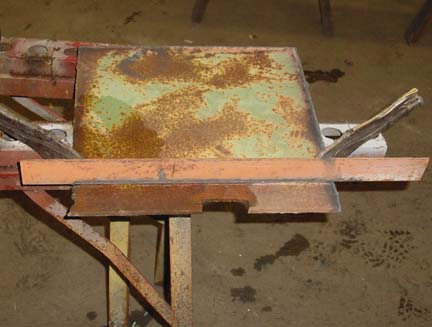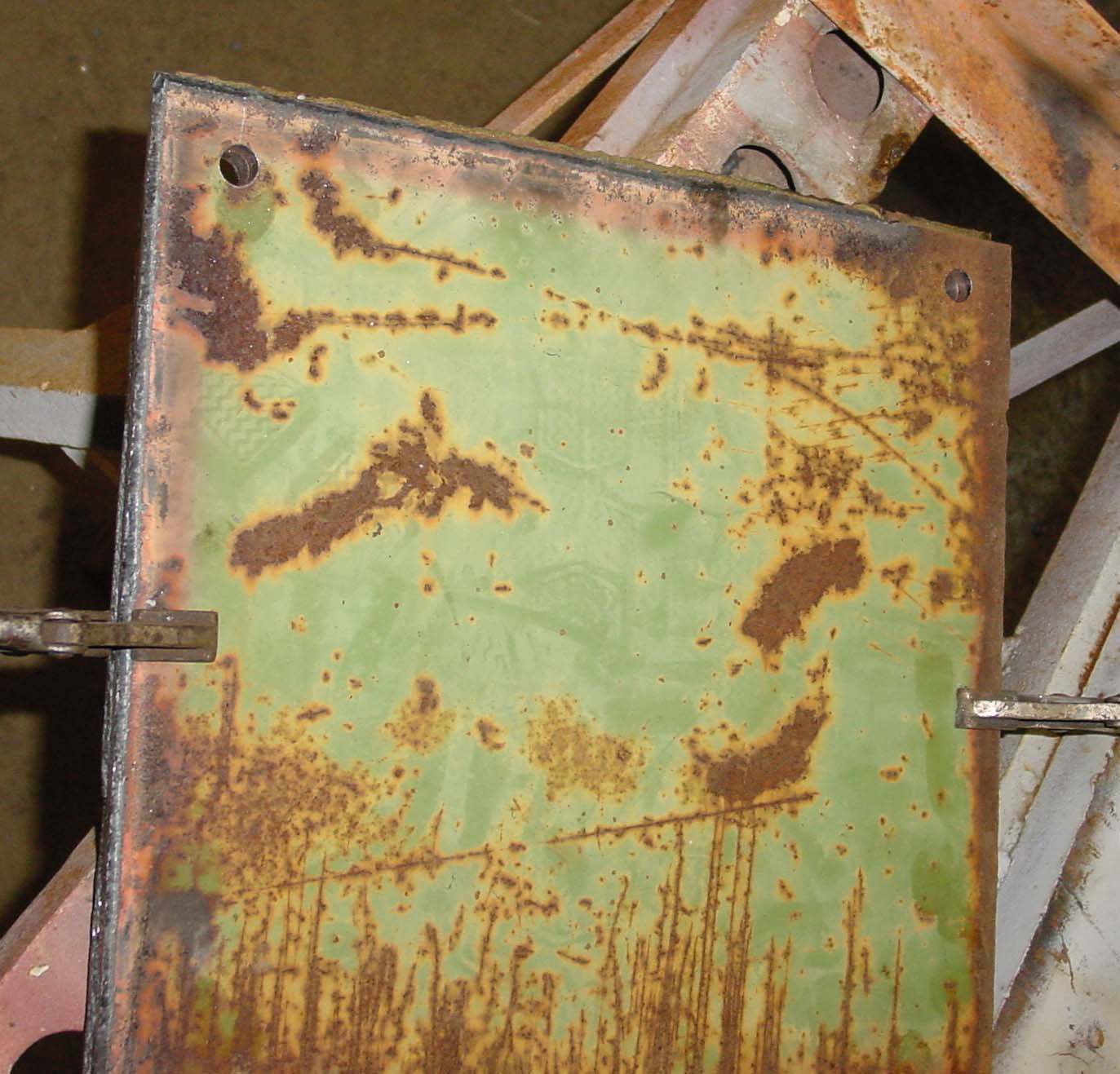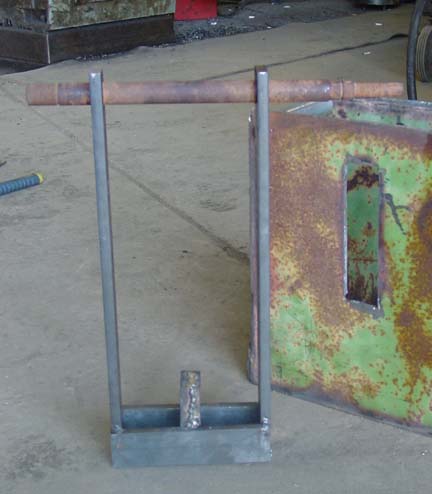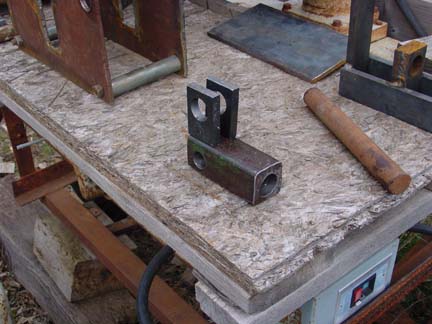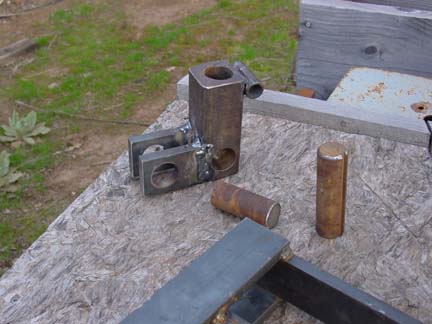The Rammed Earth Brick Machinegetting ready for this year's internship projectFebruary 28: There are a number of alternative building methods that use excavated earth to create structures; cob, rammed earth, earthships, etc. The version of this technology that we'll be using this summer to construct our second intern yurt is known as the CINVA-Ram, a manual brick making machine developed by Raul Ramirez of the Inter-American Housing Center (CINVA) in Bogota, Columbia. It might help to think of a sustainability organization as a set of concentric circles that interest with other concentic circles. While Windward has lots of tools, and even tools that make other tools, there are times when it helps to have friends who have tools that complement ours. In this case, I'm thinking of our long-standing relationship with our county's largest machine shop. Over the years we've built both a business relationship as well as a friendship, and regularly help each other out on our research projects. And so when it was time to start making our own CINVA ram, it made sense to head to town and use their heated shop to at least do the initial work.
One of the sustainability techniques that we take special delight in is the re-use of materials that otherwise would go to landfil or scrap yard. Behind the shop, our friends have this wonderful storage area that contains all sorts of used metal, hyraulic hoses, bearings, tanks, motors, etc., and it's rare that we can't find something to suit our needs when we're repairing an old machine or, in this case, looking for odd steel sizes. As a snow flurry swirled its way through the work yard, we focused on finding what we needed before it got covered up with fresh snow. With a bit of luck and imagination, we found a large piece of scrap that suited our needs and dragged it into the heated shop. Then came the process of cutting out the shapes needed to make the ram's frame. In order to make a straight cut with an acetylene torch, you need a fence to drag the torch head along. In this case, we pressed a length of angle iron into service and used a couple of vice-grips to hold it in place. Once we had the two main pieces cut out, the next step was to clamp them together and drill two 1/2" holes along the bottom.
Eventually these holes will be used to bolt a four foot length of U-channel to each side of the machine in order to stabilize it during brick production, but for now we'll use these holes to keep the two sheets of metal perfectly aligned while we locate the corner holes needed to make a long rectangular slot in the same place in each panel. With the four corners drilled out, it was time for the really fun part--using a plasma torch. It's a much more precise way to cut steel than an oxy-acetylene torch, and a true joy to use. The way the torch works is that a stream of compressed air is passed through an electric arc. The arc heats the air to more than 6,000 degrees F. at which point it's not air any more, but rather a stream of electrons, protons and neutrons; i.e. plasma.
We have four drill presses: a light duty, a medium duty, a lapidary drill press for drilling holes in stones, and one that can be mounted on a beam to drill out "waste" when you're making joints in a timber frame project. But, when it comes to drilling an inch and a quarter diameter hole through a half-inch of steel plate, it was very nice to be able to use their heavy-duty drill press since its variable speed gives it the capacity to turn a large bit slowly, and the automatic feed keeps from stressing the bit by trying to take out too much metal too quickly. It's a pleasure to watch it slowly but surely eat its way through the plate. The next step was to cut some metal conduit into six inch spacers. They're not part of the final machine; just there to keep the bottom of the machine the same width as the top until the two 6x6" end plates are welded in place. This is the point when it really pays to be as precise as possible, because once the four sides are welded together, there's not much you can do to correct any misalignment.
March 6: Today's shop time when into fabricating what the plans called the ram's "arm." It's made from lengths of 1/2" thick by 2" wide hot rolled steel bars, and the longest amount of time involved drilling two 1" holes and a second set of 1 1/4" holes. Once the parts were cut and drilled, the next step involved very carefully aligning the parts and putting in snall weld to hold the arm in place while it wa check for being square and true.
Once we're satisfied that all the parts are working together, we'll go back and finish the welds, but for now, this is enough. March 10: I was going through the plans for the ram earth brick machine, trying to decide on which parts we should tackle next, when I realized that we were missing two pages that specified the dimensions for two key parts of the machine. Ouch! Building this press has been on our to-do list for a while, so I'm guessing that the pages got mislaid as the plans were repeatedly looked at and then filed away. The measurements on the plans are in milimeters, and the steel we're building it from is dimensioned in inches, so it's enough of a challenge to make sure that everything fits without having to flat out guess at the sizes on two key parts. Not knowing what else to do, I contacted the company we purchased the plans from, Charmaine Taylor Publishing, and Charmaine couldn't have been quicker to respond, or more helpful. She made sure that we had the information we needed to go forward, and so I'm taking a few minutes here to praise her for her timely support, and to encourage anyone interested in alternative construction concepts to check out her website--she's one of the good guys! March 14: With the complete set of plans in hand, it was time to head back to the shop in Goldendale to continue fabricating the ram. The plans say that the completed weight will be around 150 pounds, and from the weight so far, that sounds about right. The first part fabricated today was the swiveled lid. When the mold is full of earth, the lid is rotated into place, the earth is compressed into a brick. Then the lid swivels back out of the way to allow the brick to rise up out of the mold. More on how that happens later on.
The second part to come out of the shop today was the power ram. This assembly forms the bottom of the mould cavity and is levered up to compress the earth into a brick. This power ram works in tandem with the swivel lid squeezing the earth between them within the context of the main frame.
March 22: As the work proceeds, the idea is to not do any more welding than necessary until we can be sure that the pieces all fit together and function properly. And example of why turned up when we cut lengths of 3/8"x6" plate steel in that the width of the actual metal was a hair more than the nominal 6". The result was that while the plate fit fine in one end of the main body, it bound in the other. One solution would have been to just grind off the excess metal, but then we would have had to do that with each of the plates that worked inside the main body, and it would have also required us to mark the pieces so that they only went in the way that fit. Better to just grind out the weld, increase the spacing and reweld it.
With that problem resolved, it was back to drilling more 1 1/4" holes. The process involves drilling a 3/16" pilot hole, and then progressively increasing the size of the drill bit until you reach a full inch in diameter. Then the stock has to be remounted on an even larger drill press so that it can be drilled to 1 1/8" before the final 1 1/4" hole is made.
The focus of todays work was on the pivot that lies at the heart of the compression action. A five inch long piece of 2"x2" bar stock had to be drilled to a depth of 3", and then cross drilled. Then two tabs had to be cut and drilled. There wasn't time enough to take the cross-hole to the full size, so we'll have to do that and then weld on the two tabs next time, but the picture above will give you an idea of how the pivot is laid out. April 4: Today saw the finish of the last of the main pieces that make up the press:the pivot assembly and the six-foot long handle.
The next phase of the work will involve griding away various sharp corners--great fun, lots of sparks and noise. April 12: The next step was to install a pair of "limit" bolts to determine how far down the piston can travel since that determine the maximum amount of dirt/cement mixture that the press can hold prior to the compression stroke. Next came the task of making some spacing bushings to keep the piston centered in the press, and to keep the walking blocks engaged within the long, rectangular slots. The walking blocks are a rather slick part of the design, and as the press reveals more of its secrets, our admiration for the original designer grows.
With the bushings in place, we were able to put the press through a full cycle and confirm that all the parts line up correctly. A number of seams had been just tack welded in case we needed to make adjustments--as we did once with the main body of the press a while back. With line-up confirmed, the next step was to take the press apart and do the finish welds. April 17: Haven't been updating this because there's not much excitement in watching paint dry as we get the CINVA ready for its debut at the Portland Earth Day celebration. Today's work as focused on adding the stabilization rails to the sides so that the press won't fall over when the handle is pulled down to compress a brick.
|
